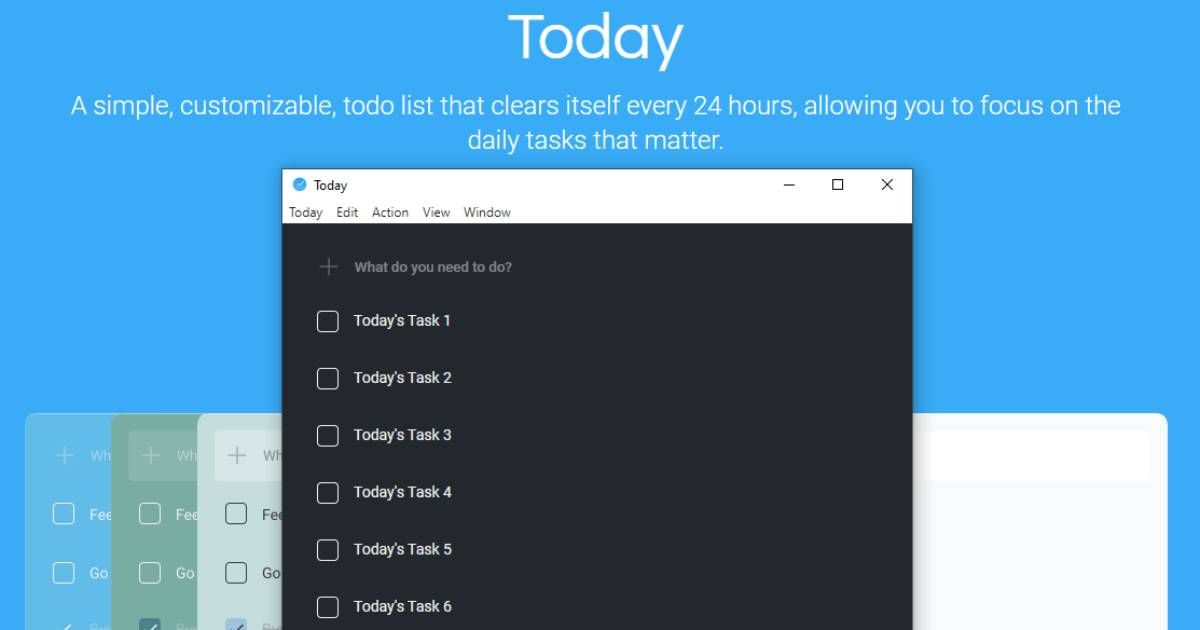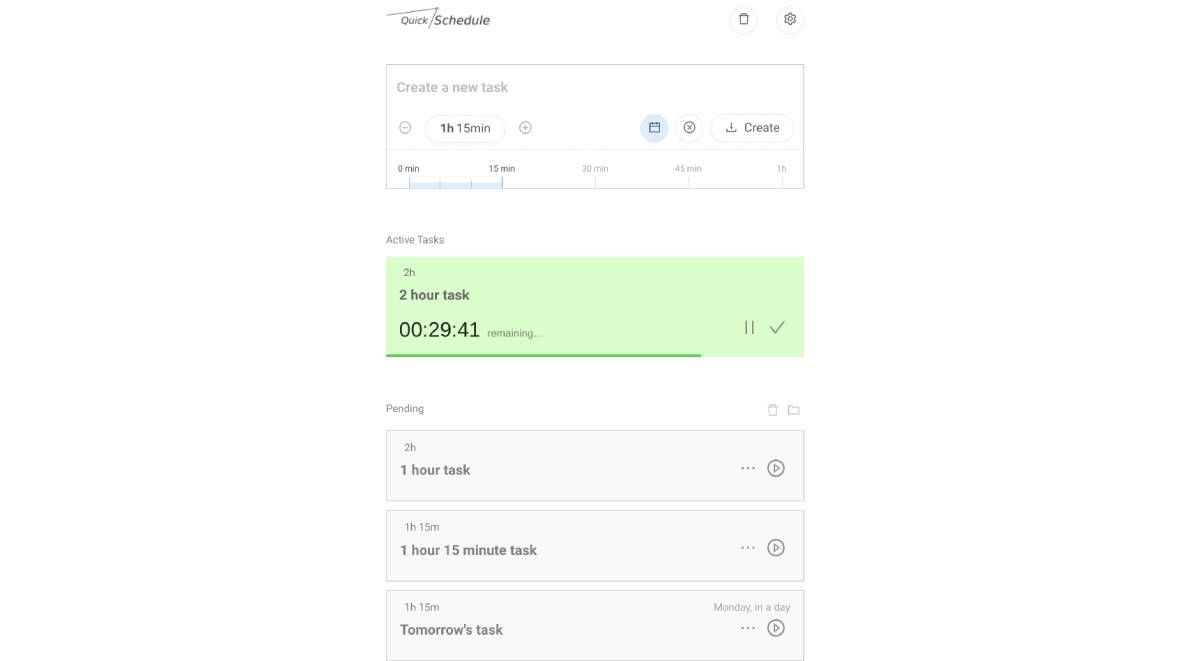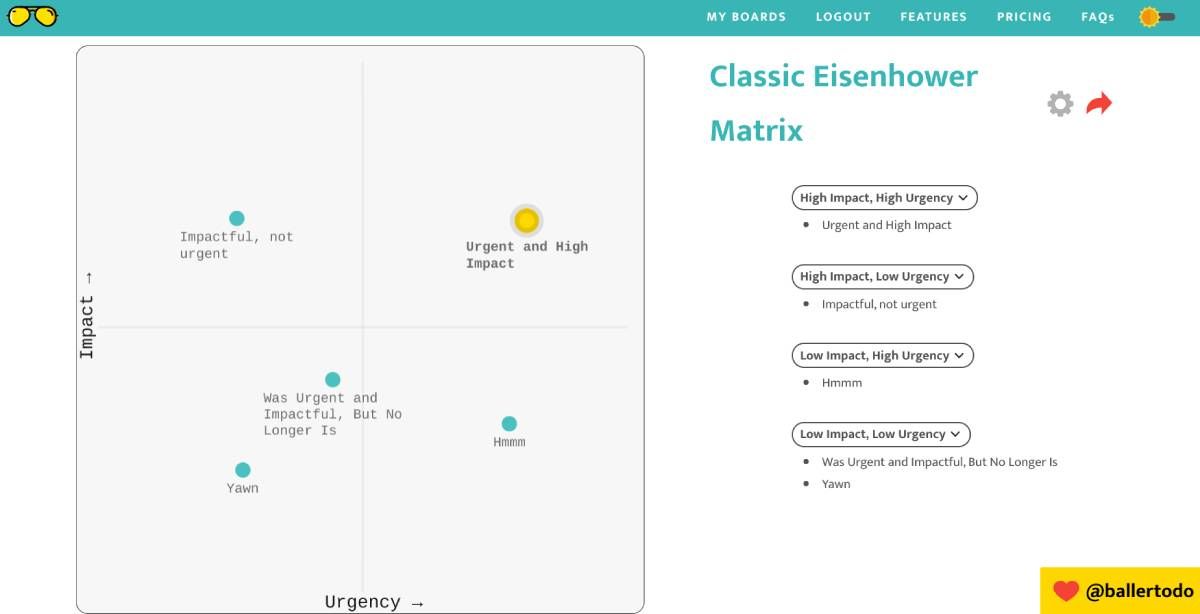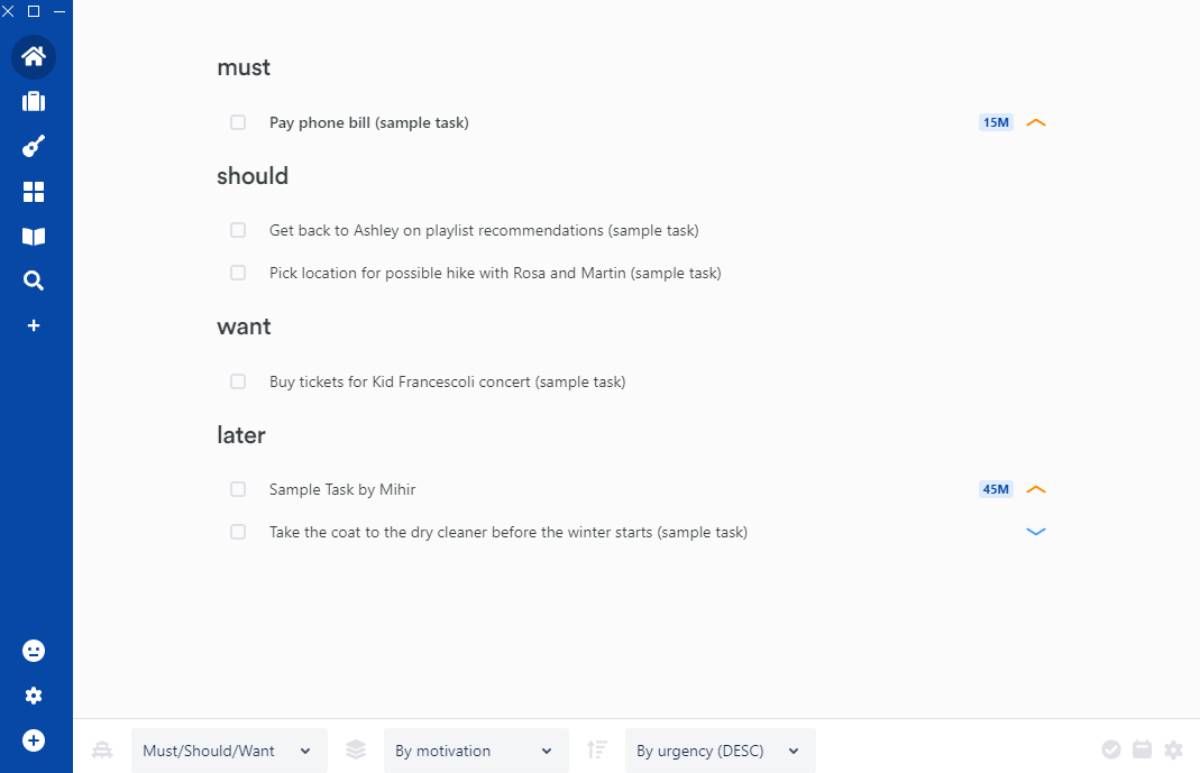Have you tried all the to-do list apps out there and nothing seems to work for you? Try these task managers that are taking a different approach to make you productive.
The best to-do list apps like Todoist and Any.Do offer a range of features for the traditional task list. But if you've not seen any increase in your output after trying these, it's not your fault. When it comes to productivity, different methods work for different people. If you're still searching for a system, try these unconventional to-do list apps to manage your tasks.
1. Today (Windows, macOS, Linux): 24-Hour Disappearing To-Do List

We divide our day by our sleep cycle. From the time we wake up till the time we go back to sleep, tasks crop up. Some are long-term tasks, but many (if not most) are just things you need to do today. Add those in Today, and the app will auto-delete them all every midnight (or whenever you set it to).
You don't need fancy features like deadlines and reminders for such tasks. What you need most is a place to jot them down once, and then forget about them. Today is a simple offline desktop to-do list, where you can quickly add tasks as they come up. Cross them out as you finish. And if you don't finish them, they're going to be gone forever, so maybe you'll realize they weren't that important anyway?
Today is also a wonderful way to tackle to-do list overwhelm. If you have too many unfinished tasks left, the list itself feels so daunting that you're paralyzed into inaction. So use Today in addition to a separate to-do list app. Pick tasks from your main app and add them to Today, along with other things that come up, thus saving your brain from the crushing weight of "too much to do."
Download: Today for Windows | macOS | Linux (Free)
2. Quick Schedule (Web): Timed Task List to Divide Your Work Day

Sometimes, making a to-do list is the easy part, but what you actually need to figure out is how much time to dedicate to each task. If you're all about scheduling tasks into a calendar, then Google Calendar + Tasks is the best to-do list. If you just want a simple app to assign a certain amount of time to your tasks and get through them one by one, then Quick Schedule is what you need.
In Quick Schedule, you have to write a task and assign it an amount of time. So let's say the tasks today were to code for two hours, work on the logo for one hour, and practice the elevator pitch for one hour, you have those three tasks ready. When you're ready to work on any one of those tasks, start the timer. Work till the timer dings, knowing you've accomplished your goals.
The default variables are one, two, three, and five hours, but you can set custom time intervals with 15-minute increments. You can also assign tasks to other days on the calendar, so in case you don't finish today's list, just assign the task to tomorrow.
3. Baller ToDo (Web): Perfect Implementation of the Eisenhower Matrix

The Eisenhower Matrix is one of the most popular ways to prioritize your to-do list. Baller ToDo has implemented it perfectly in the form of an app, and even allows you to change the parameters.
By default, it shows you a board with a four-quadrant matrix, with the two-axis as Impact and Urgency. Click anywhere on a quadrant to add a task. Drag and drop tasks to put them in different spaces as the task's priority changes. You'll see all tasks by category in a list on the side. It's simple and perfect.
Baller ToDo lets you use the app locally in your browser, without sending any data online. Alternatively, you can log in to create multiple boards, changing the axis of "Impact" or "Urgency" as needed. The paid version even lets you share boards with other users and collaborate on tasks.
The one thing missing in Baller ToDo is that you can only change the two axis, you can't individually customize each quadrant. So matrix variations like "Do Decide Delegate Delete" don't work with this. Hopefully, that's a simple change they can introduce in future updates.
4. Lunatask (Windows, macOS): Multiple To-Do Methods One Privacy-Focused App

Lunatask is a powerful new to-do list app that blends several methods together. This desktop program also places a premium on privacy by encrypting all data. While there isn't a mobile app to view your lists, there is a workaround to add tasks to the desktop app via mobile.
The different productivity methods appear as "workflows" in Lunatask, including now-later, must/should/want, kanban, Eisenhower Matrix, and one-by-one. Of these, only one-by-one, now-later (two categories for your tasks) and must/should/want (tasks grouped by motivation) adhere to the principles of the method. Both kanban and Eisenhower Matrix rely on visual dashboards which are sorely missing in Lunatask.
When you add a task, you can assign it a motivation, add estimated time, and a priority level. At any point, you can sort your to-do list by these parameters. You can also create different to-do lists for different spheres of your life, for better task management.
Lunatask further adds other productivity features like habit-tracking and mood tracking. You can set schedules like morning routines and record your current mood by selecting an emoji from a range of options. While mood journaling has nothing to do with to-do lists, the habit-tracking part can be used well for repetitive tasks.
Download: Lunatask for Windows | macOS (Free)
5. Strikethru (Offline): Paper-Based To-Do List System Aiming for Simplicity
We've often debated about the pros and cons of paper vs. digital to-do systems. But the point of this article is to explore unconventional task management systems. Chris Kyle's Strikethru is an old favorite in paper-based to-do list journals, which you can recreate.
The video above explains the system succinctly, but here's a brief explanation. The journal is broken into four sections:
- The Vault: Structured task lists for all your different projects
- The Dump: A place to unload your thoughts and to-do items as they come to you.
- The Calendar: Schedule your future tasks.
- Live List: Your task list for today.
Tasks in the live list depend on other sections. For example, you might add "133.3" as a task, which means to go to page 133 (in the vault) and complete the third item. Or you might strike out a task in the live list to mean it's completed, or strike out and add a < to mean it's returned to the vault to do another day.
It's simpler than it sounds, and a fantastic way to organize your tasks with a book. Kyle's original PDF templates for Strikethru are no longer available on his site, but if you Google them, you'll find several similar resources. Plus, you don't really need the templates as the system is simple enough to implement in your own way.
Have You Considered Multiple To-Do Lists?
All these task management and to-do list systems have their own champions, each claiming one is better than the other. The onus is then on you, the user, to pick one. But that's crazy. What rule book says you have to pick one to-do list system?
You could use different systems, apps, or a combination of them for different things. Nothing is forcing you to group all your tasks into one app or method. The only thing that matters is actually getting things done, and the systems and apps are just a way of getting there.